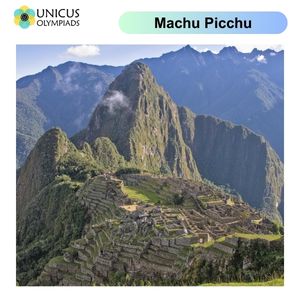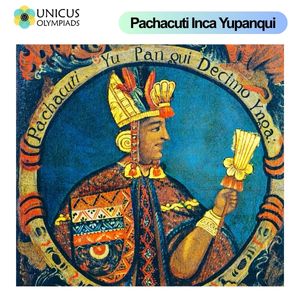

Machu Picchu is one of the most iconic and mysterious ancient sites in the world. Situated in the Andes Mountains in Peru, it is a remarkable testament to the engineering and architectural prowess of the ancient Inca civilization. This UNESCO World Heritage site continues to fascinate historians, archaeologists, and tourists alike. In this article, we will explore what Machu Picchu is, who built it, and why it has become famous.
Machu Picchu is an ancient Incan city located in the Andes Mountains at an altitude of around 2,430 meters (7,970 feet) above sea level. The site overlooks the Urubamba River Valley in southern Peru, and it is surrounded by dramatic mountain peaks, lush greenery, and steep cliffs, offering a breathtaking view. The name "Machu Picchu" means "Old Mountain" in Quechua, the language of the Inca people.

Machu Picchu is known for its impressive stone structures, including temples, terraces, and palaces, all meticulously constructed without the use of mortar. The site covers around 13 square kilometers (5 square miles) and features an intricate network of roads, plazas, and agricultural terraces. Notable structures include:
Today, Machu Picchu is a popular tourist destination and one of the most visited archaeological sites in the world. It is carefully preserved by the Peruvian government and UNESCO. Visitors can access the site by hiking the Inca Trail, a multi-day trek through the mountains, or by train from the town of Aguas Calientes, located at the base of the mountain.
Machu Picchu was built by the Inca civilization, which flourished in South America from the early 15th century until the Spanish conquest in the 16th century. The Incas were known for their advanced knowledge of engineering, agriculture, and astronomy, as well as their remarkable ability to construct large, sustainable cities.

The construction of Machu Picchu is attributed to the Incan emperor Pachacuti Inca Yupanqui, who ruled from 1438 to 1471. Pachacuti is often credited with expanding the Inca Empire from a small regional kingdom to a vast empire that stretched across much of the Andean region of South America.
The exact purpose of Machu Picchu remains a topic of debate among historians and archaeologists. It is widely believed that Machu Picchu served as a royal estate for Pachacuti, possibly as a place of retreat, worship, and astronomical observation. Some theories suggest that it was a religious site, while others believe it had military or ceremonial significance. The site's remote location, combined with its impressive architecture, suggests that it may have also been a strategic fortress.
Machu Picchu is famous for its significance in understanding the Inca civilization. The site offers valuable insights into Inca culture, architecture, and engineering. It remains one of the most significant archaeological sites of the Americas and is considered a symbol of Incan achievement.
While Machu Picchu had been known to local indigenous people for centuries, it was largely unknown to the outside world until its rediscovery by American historian Hiram Bingham in 1911. Bingham's expeditions brought international attention to the site, and it soon became a subject of fascination for historians, archaeologists, and tourists alike.
Beyond its historical and archaeological importance, Machu Picchu has become a cultural icon of Peru and the Andean region. It is a symbol of Inca resilience, ingenuity, and spirituality. The site attracts millions of visitors each year, making it a vital part of Peru's economy and national identity. It is also a significant site for indigenous Andean people, many of whom view it as a sacred location.
In 1983, Machu Picchu was designated a UNESCO World Heritage site due to its cultural, historical, and architectural significance. It is recognized as one of the most important examples of Inca civilization, attracting scholars, archaeologists, and tourists from around the world.
Machu Picchu is one of the most famous tourist destinations in the world. Its mysterious allure, stunning views, and connection to ancient cultures make it a must-see for travelers and history enthusiasts alike. The site is also a hub for ecotourism, with a focus on preserving the environment and supporting sustainable tourism practices. It remains a testament to the enduring legacy of the Inca Empire and continues to inspire awe in all who visit.
While tourism is a major source of revenue for Peru, overtourism poses a significant threat to the preservation of Machu Picchu. The increasing number of visitors to the site has led to concerns about environmental degradation, damage to the structures, and the impact of tourism on the local ecosystem.
The Peruvian government and UNESCO have implemented measures to preserve Machu Picchu, including limiting the number of visitors allowed each day, implementing strict guidelines for tour operators, and monitoring the environmental impact of tourism. Efforts are also being made to protect the Inca Trail and the surrounding areas from erosion and damage caused by foot traffic.
Climate change and its effects on the surrounding ecosystem are another concern for the preservation of Machu Picchu. Rising temperatures, changes in rainfall patterns, and increased risk of flooding and landslides could threaten the integrity of the site. Conservationists are working to monitor these effects and develop strategies to mitigate their impact.